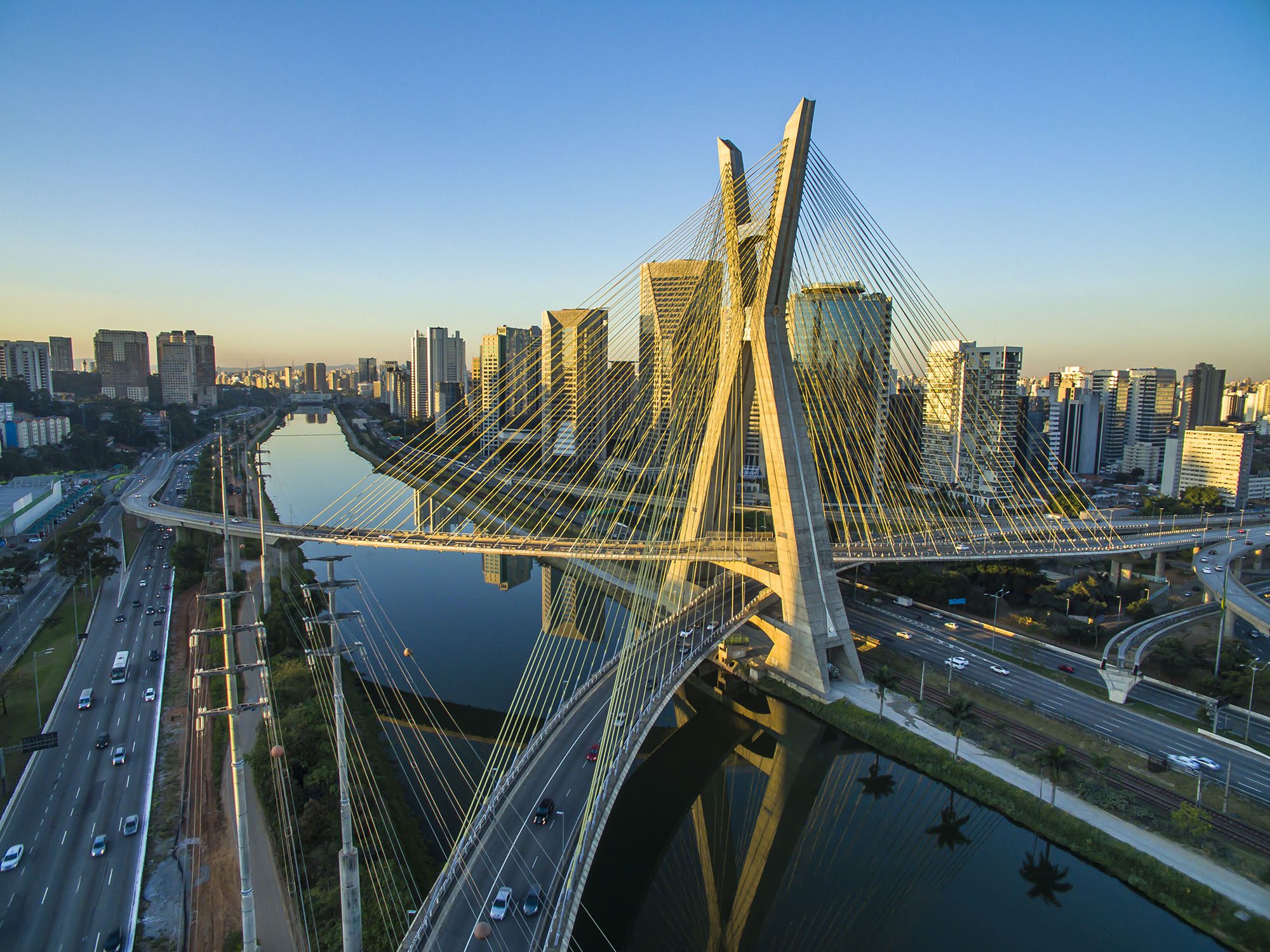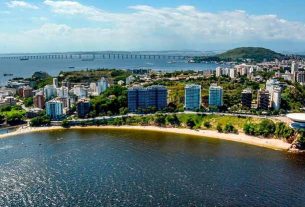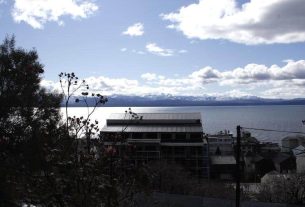For São Paulo residents tired of their megalopolis and its attractions, a trip to Santos won’t hurt their pockets or their precious time.
The city is just 72 kilometers from the state capital, with illustrious attractions that can range from nautical trips to diving, museums, preserved historical corners or privileged views of the horizon, seen from the top of hills.
The beaches are a little closer to what tourists expect: kiosks all along the coast are the gateway to an extensive sand carpet that ends in a procession of foamy waves. It’s worth long afternoons waiting for your summer tan or with friends or family, snacking here and sipping something there, while the sun cools your spirits on the horizon.
Get to know some points of common interest to tourists and that have been a hit among the people, starting with the beaches, which are located on the seven kilometers of sand that delimit the territory and leave it bordering several marine species and many other nautical options?
Santo Amaro Fortress
Built to defend the port at the end of the 16th century, the fortress was only listed in 1967, when it was restored by the Catholic University of Santos. Today, it is considered the largest historical-military monument in São Paulo, and many of the values and period items of this place, which defended itself from pirate attacks with a lot of gunpowder and determination, are on public display.
More than a portrait of the country’s history, the fortress can be used by visitors as a viewpoint and, thus, monitor the comings and goings of ships to the city’s port.
Access is via boat, with daily departures every 30 minutes at Ponte dos Préticos, in Ponta da Praia.
Old Jail
Delivered to the city in 1866, after 30 years of construction, this building has passed through the hands of various public authorities, finally becoming a public prison from 1897 until the end of the 1950s.
Its space, located in Praça dos Andradas, in the city center, was renovated and reopened in January 2000, becoming a center of culture and art, keeping prison stories alive in its galleries, and presentations in the room that is now called Plínio Marcos, with capacity for 150 people, and which hosts small musicals and plays.
Morro do José Menino
The port may well be the apple of the eye of many tourists who disembark their expectations in the city of Santos, but Morro do José Menino has acquired its share of notoriety precisely for offering free flights and, thus, offering a view to few at all. the Santos Bay, its beaches and even São Vicente.
The climb to the top of the hill can be done by car or even aboard the cable car located on Itararé beach, in São Vicente.
Botanical Garden
Named the Chico Mendes Botanical Garden, the park has different species of plants and, in addition, functions as the cultivation center for seedlings that will, one day, supply the kilometer-long garden on the city’s waterfront and streets.
Opened in 1925, in the old Municipal Garden, the current place only began to house the garden’s plant life in 1973, receiving a major redesign at the turn of the 20th century to the current one, today it even has a wooden deck and fountain, among hundreds of others. of attractions that take refuge in its 90 thousand m² area, divided into 20 collections.
Jardim Botânico is located in the Bom Retiro neighborhood, on Rua João Fracarolli, s/n (free entry).
Saudade Lagoon
No sea. In Nova Cintra, Lagoa da Saudade receives public attention, with a space dedicated to fishing, infrastructure for you to prepare barbecues in kiosks, a children’s playground and even a professional skateboard ramp, making the place a multipurpose center for all ages – even an alligator, discovered living in those waters since 2001.
Mount Serrat
Tourists have two options to get to the Sanctuary of NS do Monte Serrat (open from 9am to 5pm): either face the 415 steps that lead to the construction, or pay the fare for the funicular cable car that leaves visitors facing the building erected in 1609 in honor of the patron saint of Santos. A bonus is the view from the top, with a privileged panoramic view of the city and its port.
Historic center
The electric tram may be the “mandatory tour” for tourists who wish to relive the historical period of Santos, but this does not exclude the walking route from the traveler’s itinerary, which proves to be as clear and rich as the journey aboard the secular transport.
The route, which usually begins on the outskirts of Praça Mauá, is a journey into the past through corners and intersections now full of cars, but still untouched by the present in architecture as full of history as books, which can be seen in front of the Church NS do Rosário, Teatro Coliseu and Conjunto do Carmo.
At night, it’s worth taking the time to enjoy the bustling nightlife that takes over the region, where many restaurants lose their makeup and become nightclubs with no end time.
Electric Cable Car
Walking is recommended and nightlife is also recommended. But it’s difficult, after all, to let the cable car go unnoticed and not want to cross the streets of Santos aboard its slow incursion through the city’s roads.
The most notorious, among the five that go from here to here full of tourists, is the “shrimp”, imported from Scottish sweat, in 1911, and all produced in wood. Stops are made at the Saturnino de Brito building, where behind-the-scenes information about the construction of the Santos canals awaits tourism, and at Outeiro de Santa Catarina, the city’s initial landmark.
It is possible to board and disembark without having to pay a new fare. So, take a risk, go down and explore for yourself the vivid fragments of Santos’ history. , where the Santos Archive and Memory Foundation building is now located. Departures from Praça Mauá every 30 minutes, on weekends, and every hour, from Monday to Thursday.
Coffee Museum
Another separate chapter that looms large, in the heart of the historic center of the city – more precisely, on Rua XV de Novembro. The Coffee Museum hosted countless commercial transactions for one of the most national products in Brazilian history until 1957.
Its neoclassical decor alone is worth the visit, with much of the building’s glories having been maintained and preserved. Of course, don’t forget to enjoy a drink in the museum’s cafeteria.
Fishing Museum
The building houses fish and seabirds, always with the aim of, firstly, creating awareness of environmental preservation. The highlight on display has, for years, been the bone of a whale, measuring just over 23 meters in length.
The Fishing Museum is located in Ponta da Praia and is open from Wednesday to Sunday, from 11am to 6pm.
Museum of the Sea
For those who see grace in the sea, not just inside it, but outside, Santos offers the Sea Museum, considered one of the most current in Latin America, with a library that presents around 2 thousand works linked to the area, in addition to an enviable collection of marine creatures, such as a whale shark – the only one on display among Latin countries.
The Museum is also located in Ponta da Praia, and is open from Monday to Sunday, from 9am to 6pm.
Santos Aquarium
Sharks, turtles, rays and varying colors and sizes of fish parade through the 30 tanks at the Santos Aquarium.
The cute attraction of the place is the Magellanic penguins.
Laje de Santos Marine State Park
The route to Laje de Santos is by boat, leaving from São Vicente. It’s a 90-minute journey that usually ends with scuba diving, which can be done either in the morning or on nighttime underwater excursions.

Sign up for our newsletter and stay up to date with exclusive news
that can transform your routine!
Warning: Undefined array key "title" in /home/storelat/public_html/wp-content/plugins/link-whisper-premium/templates/frontend/related-posts.php on line 12
Warning: Undefined array key "title_tag" in /home/storelat/public_html/wp-content/plugins/link-whisper-premium/templates/frontend/related-posts.php on line 13




